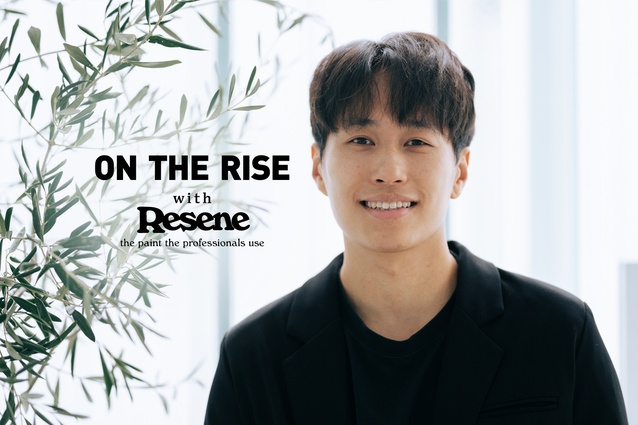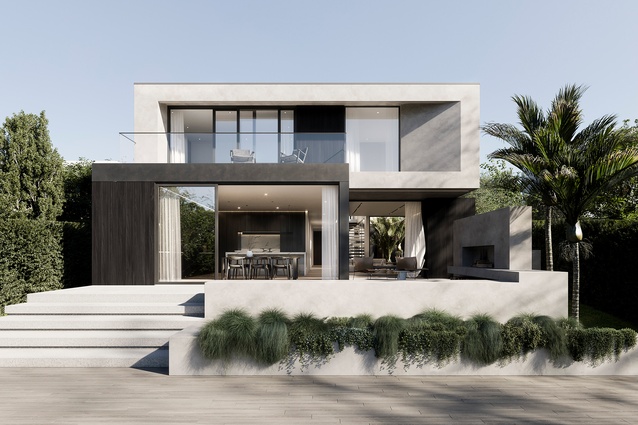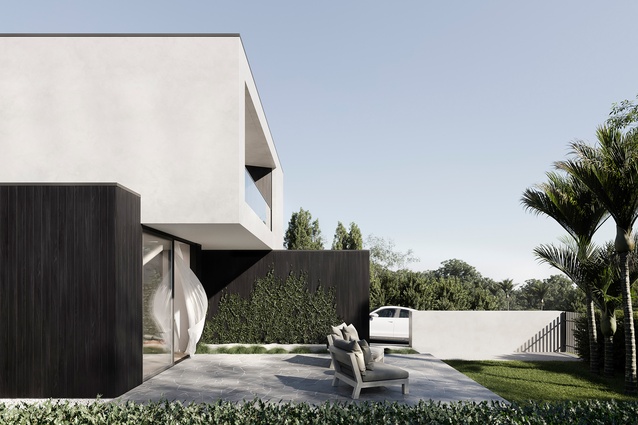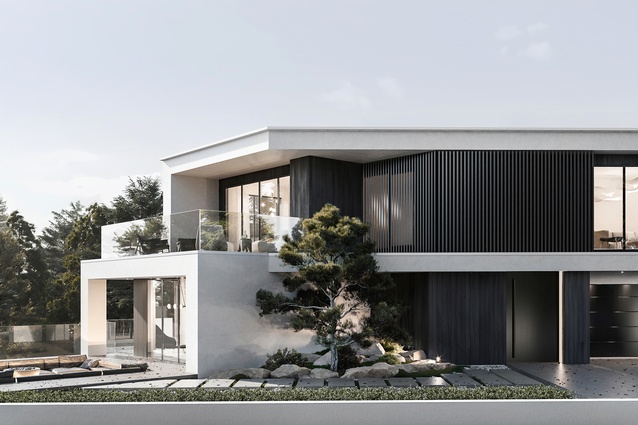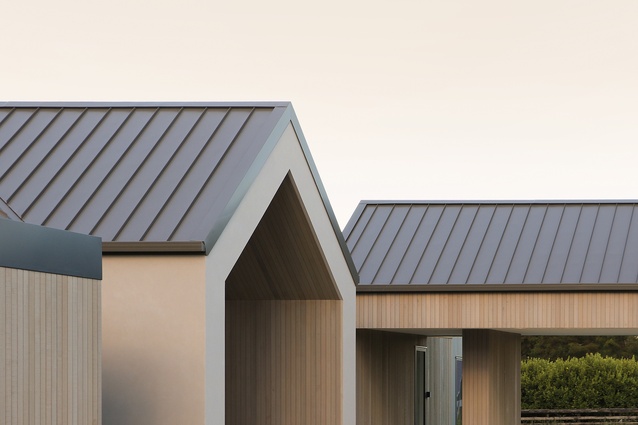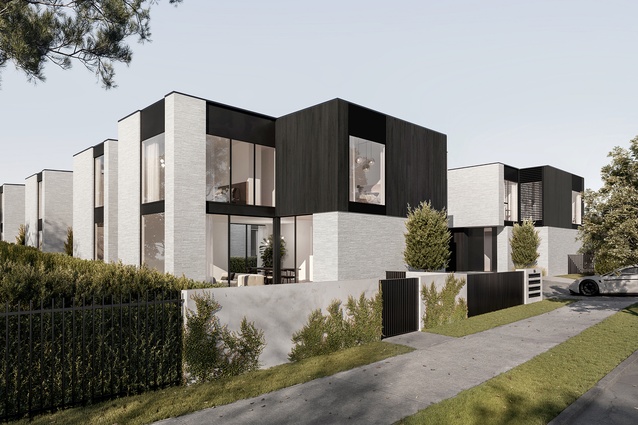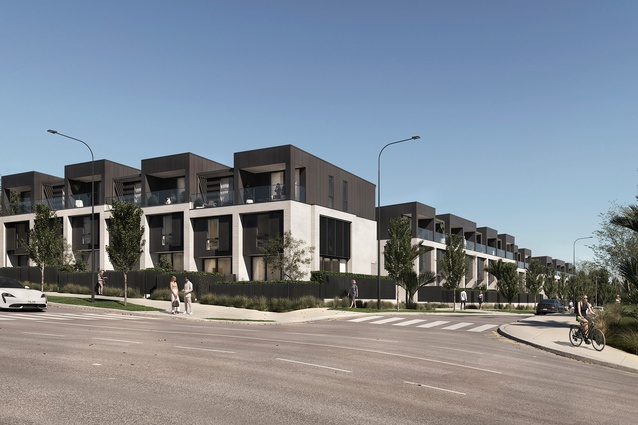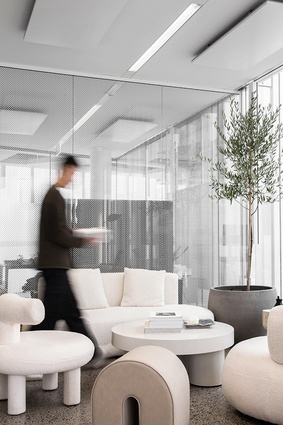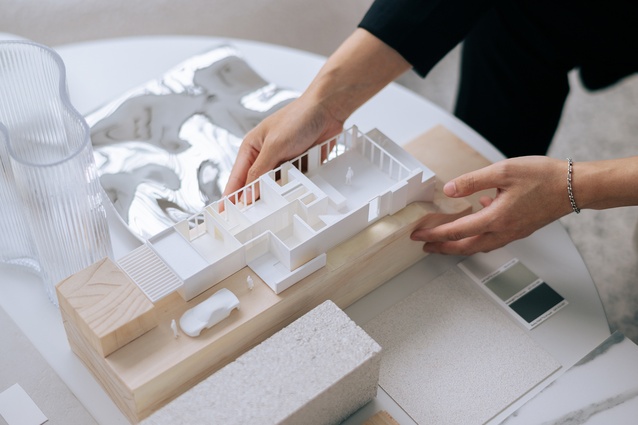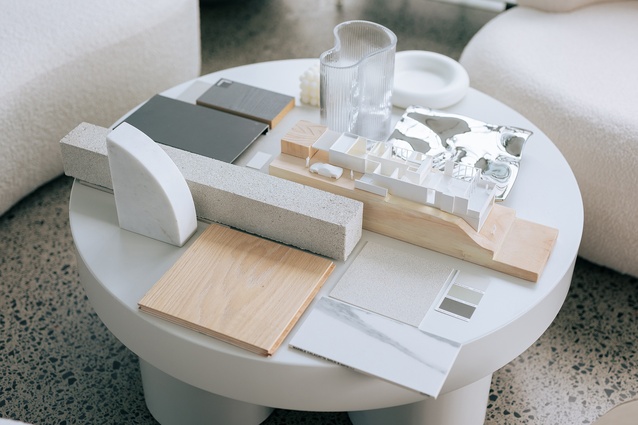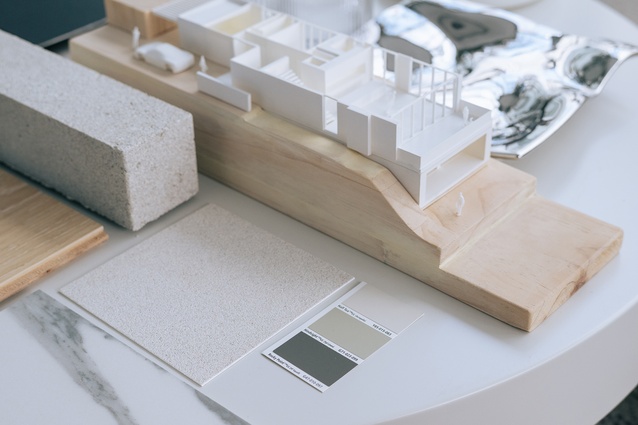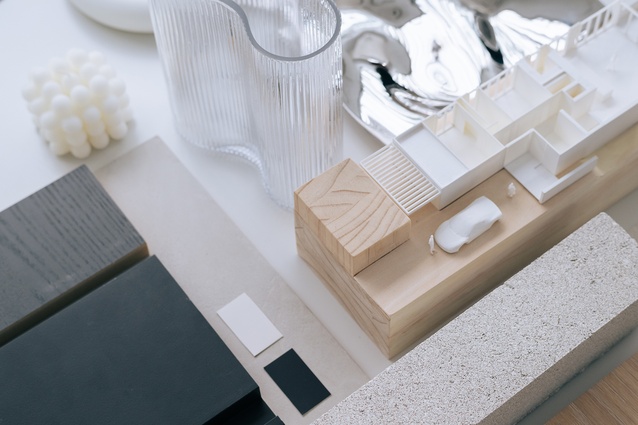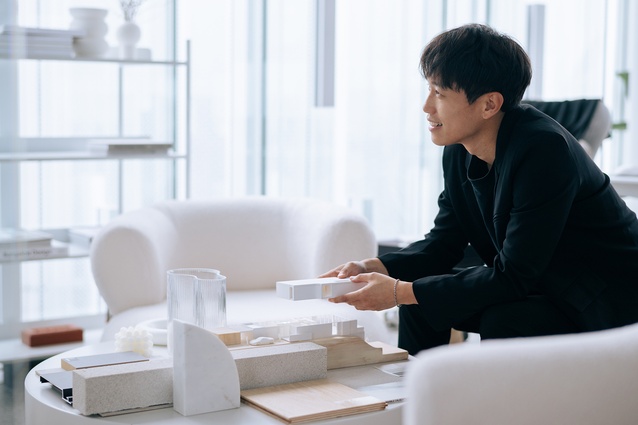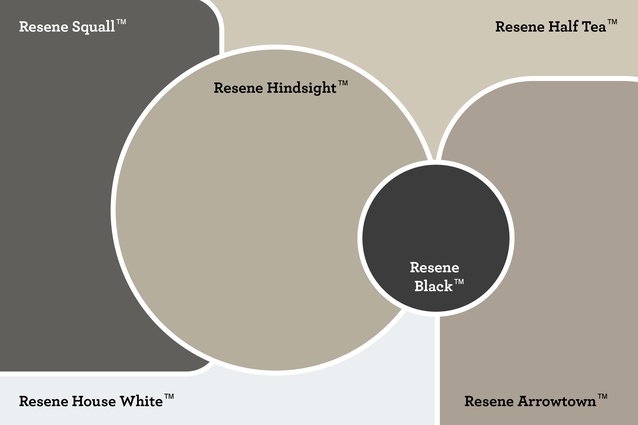On the Rise: Han Chen
ArchitectureNow’s On the Rise series, supported by Resene, profiles young designers from across the country who are shaping the future of the industry. In this instalment, we talk to architect-developer Han Chen, director of Shape Architects, about his passion for residential architecture, and the challenges of starting an architecture practice.
Jacinda Rogers (JR): When did your passion for design start?
Han Chen (HC): As a kid, I loved watching cartoons after school. The other kids’ parents bought them action figures or the latest Gameboy to play with based on the TV shows, but we couldn’t afford them, so I would often sketch and draw these characters instead. This eventually developed into a hobby and that’s where my passion for art and design started.
At some stage during my teenage years, my Mum recommended I pursue a career in architecture (probably so I wouldn’t end up as a struggling artist). That’s when I started transitioning from drawing cartoons to drawing houses. In high school, I did product design, graphic design and painting — all sorts of different stuff related to art. And then, ultimately, I chose architecture because of the intricacy in designing realised/built spaces that no other medium can replicate.
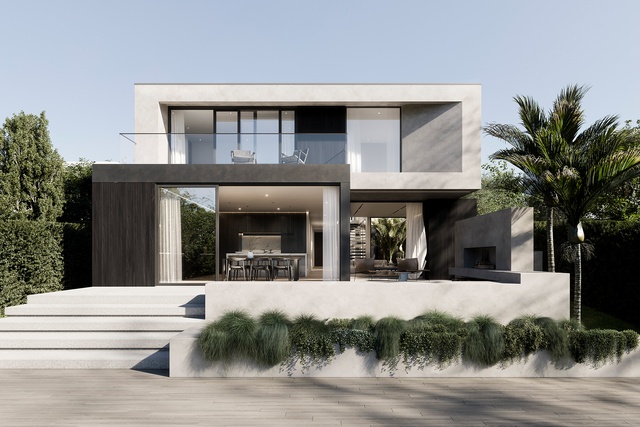
(JR): After you graduated from the University of Auckland in 2015 with a Master of Architecture, did you have an idea of what you ultimately wanted to achieve?
(HC): I did. I was always more passionate about residential architecture because of how intimate the design process is, in relation to each client’s specific needs and the demands of each different site.
Coincidentally, my parents started developing property around the same time I was graduating so I was learning a bit about property development through them. And as soon as I left university, I knew I was going to find a role at a smaller residential design studio rather than a more corporate practice so that I could be more hands on with the entire design process.
JR: Tell me about what happened next. Where did you get your first professional work experience?
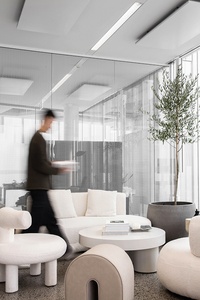
HC: My first job was with Brendan Rawson at Archoffice — a truly amazing mentor who taught me everything there was to know about residential design, form-making, proportion, etc.
From there, I moved on to X Studio, where I was given an opportunity to be a co-director. That gave me experience in not only designing but managing a company: hiring a team, building a good portfolio and a good team of people around me to deliver projects together. So that’s where I gained my experience in operating a business. After a few years, I decided it was time to start my own journey and moved on to start Shape [Architects].
JR: Have you noticed any changes in the housing development market since we spoke last year?
HC: There has been a small shift that I’ve noticed. It’s that developers tend to want to do better quality projects because they can see the value that great architectural design delivers.
These developers are saying: “Instead of doing large-volume, low-priced developments, maybe we take a look at standalone, comfortable housing that is beautifully designed and architecturally articulated.” They are seeing that when they invest time into developing a better product, that product goes onto the market with much less competition. And a product that’s more unique, that everyone’s happy to work on, design and build, will ultimately translate to buyers who are more than happy to acquire these homes.
It’s a huge plus for us because we get more creative freedom when designing higher-end housing.
JR: You don’t tend to hear a lot of appreciation for architecture amongst developers.
HC: No, but go over to Australia and it’s huge. There’s a company called Graya in Brisbane, that develops multi-million dollar mansions upwards of $10 million. One project of theirs is called Scorpia — architecturally, it’s monolithic, distinguished and very boutique.
The developers finished that project and on the first open home, there was a news article talking about a line down the street of people wanting to buy that house. Ultimately, I think it sold within a month somewhere over $10 million. That project is a great testament to good design and how everyone can benefit in that scenario.
New Zealand is not there yet in terms of the economy facilitating residential development to that magnitude, but if we can take baby steps in that direction, I think it’ll be beneficial for not only us as architects, but also for developers and Auckland in general, to achieve a better outcome for the urban fabric of our cities.
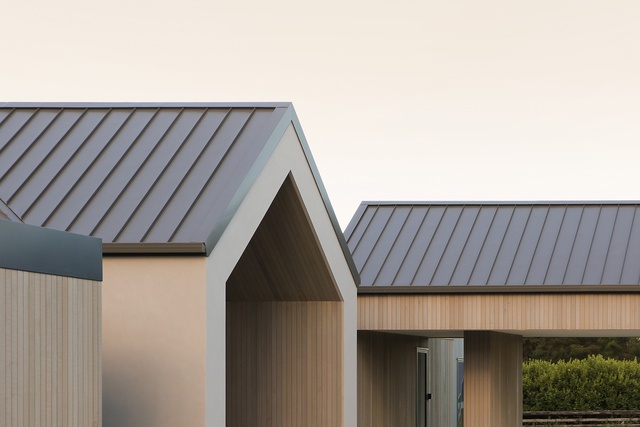
JR: As a Design LBP and now as a registered architect, you have a portfolio of 300+ completed projects. Are there any projects that you’ve done recently that stand out as favourites?
HC: Recently speaking, I think that Riverhead Farmhouse came out quite elegantly. At Shape we do a range of projects — some are super contemporary, monolithic and minimal in their design. But, at the same time, we have projects like Riverhead Farmhouse that get back to traditional roots with the farmhouse and barn vernacular, that emulate a warm, bach-like aesthetic that sits so well in its countryside setting.
I wouldn’t say that one project stands out amongst all the rest. We don’t have a signature aesthetic right now and we’d like to explore different styles. We like to investigate what makes different aesthetics beautiful, what makes them attractive, what proportions they require, what proportions they demand and how that translates to the way that our clients choose to live.
It’s good to touch base on a wide range of architectural languages and we are lucky to get that chance, as we have a large range of different clients coming in with briefs for lifestyle farmhouses, contemporary townhouses, all the way to modern glass spaceships.
JR: You’ve done a large development recently called Flat Bush School Road. How has your experience been with masterplanning?
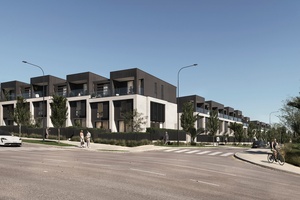
HC: Flat Bush School Road was 40 lots. At that time we thought it was pretty big. When you move up and start doing master planning, there’s so many factors you need to manage just from the sheer scale of a whole masterplan. You get into very detailed civil, roading, infrastructure and urban design matters. There’s also a huge list of consultants that you need to work with. Council’s urban design team; sometimes it’s iwi, and sometimes it’s AT (Auckland Transport).
Now, we’re looking at doing the next big thing, and have a 100 lot subdivision coming up which we are preparing for. Masterplan design is in a completely different animal from designing a standalone house, but it’s interesting and I love learning about development from multiple different perspectives.
JR: In addition to a very busy work schedule, you are a regular guest speaker at the University of Auckland’s School of Architecture. What inspires you to educate students?

HC: I naturally gravitate towards teaching. I don’t know if it was because my dad was a math teacher when he was my age. There’s something inspiring about seeing the next generation of architects grow into their careers. It sounds kind of corny but it’s true. Seeing the direction that students want to take and what inspires them.
You also learn a lot from them via the way that they design and the new programmes that they pick up. Students will always pick up on the newest and latest software for producing floor plans, 3D modelling, or renderings. And, through them, we pick up on those programmes and ask: “Can we perhaps adopt those and use them in our studio?”
Lastly, it gives us a good footing to create a relationship with talented students who end up graduating. I have encountered students who said, “I saw your lecture” and when we had a position available, they put their name forward and now they’re part of our team.
JR: You must have to work quite hard to keep a good work/life balance. What keeps you well and feeling ready to take on a hectic work week?
HC: I try to have my ‘zen’ moment when I can in my bathtub every evening to unwind, as I work until late — probably 8 or 9pm every day — and without it I would have gone mad already. I think at the core is finding ways to unwind and stay active. I play golf three to four times a week if I have time, just to get some physical activity and balance. I’m somewhat of an addict now and I have dragged many clients and consultants along to the green with me.
I also try not to take work outside of my work hours. In my downtime, I listen to a lot of podcasts, so long as they’re not directly about architecture. I like to learn about how other things in this world operate, like Tesla and its rollout of electric cars, or Apple’s foray into the VR (virtual reality) space.
Learning about fields that are parallel with my own is of particular interest, like if Apple is investing in VR tech, how long until we have a robust, state-of-the-art VR system to adopt into our design methodology?
I try and draw similarities from, and apply my learning to, everyday business and say: “What if something dynamic like that eventuated one day, how would we adapt, how would that change our industry moving forward?”
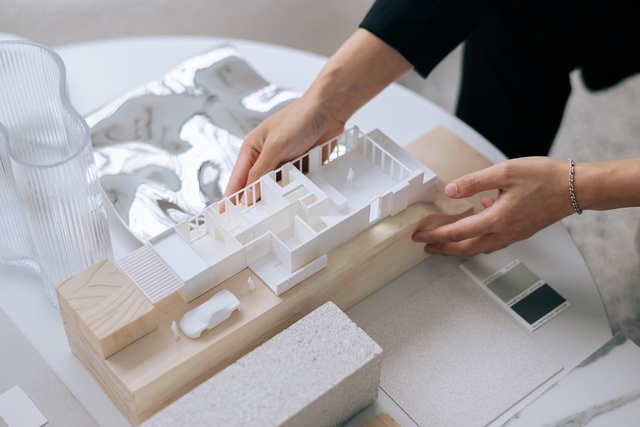
JR: Lastly, what was the inspiration behind your Resene mood board?
HC: With this mood board I tried to build up textures and colours in reference to natural materials in their raw state. I find that the architecture and design can resonate more cohesively with the tones of the interior using this approach.
I’m recently favouring monolithic minimalism, so lime-rendered surfaces, with beige and limestone tints in Resene Half Tea and Resene Hindsight as well as earthier tones such as Resene Arrowtown help ground the interior in its setting.
I also enjoy the interplay between these natural tones and the contrasting freshness and modernity of Resene House White and Resene Black and Resene Squall.
See more from the On the Rise series here.
To read a 2022 interview with Han Chen regarding mid-density developments, click here.
Shape Architects is an award-winning, design-led and client-focused studio, specialising in residential architecture. Learn more at shapearchitects.co.nz and follow shape.architects for updates.

